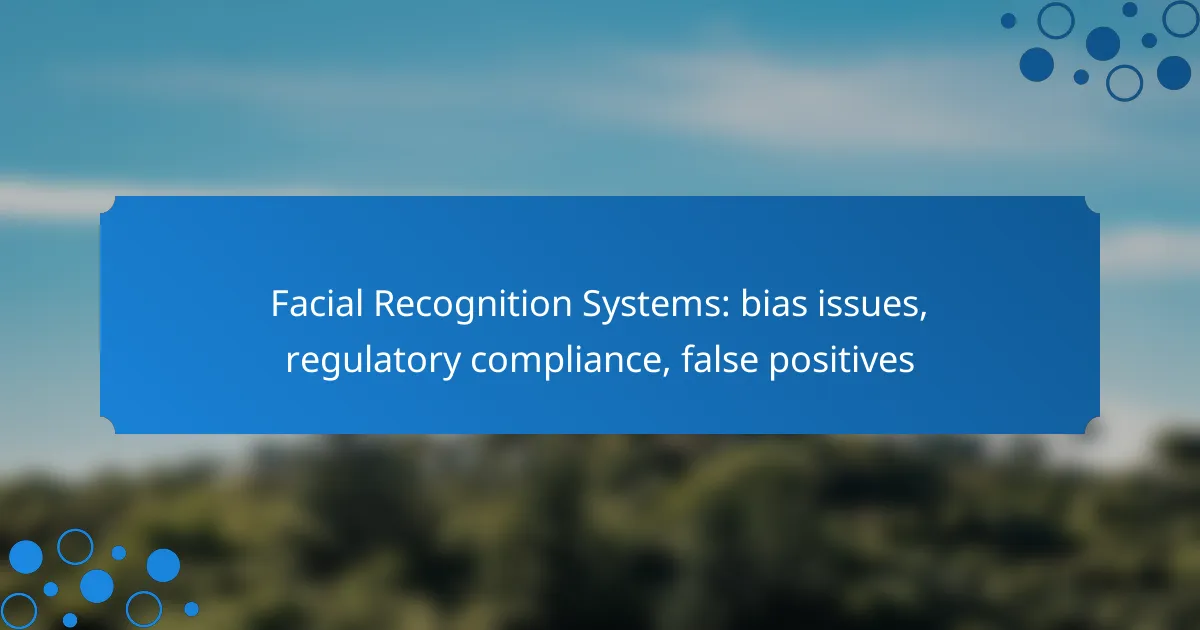Facial recognition systems have become increasingly prevalent, yet they raise significant concerns regarding bias, regulatory compliance, and the potential for false positives. Addressing these issues is crucial to ensure the technology is applied ethically and responsibly, particularly in diverse populations. In Canada, adherence to privacy regulations like PIPEDA is essential for maintaining public trust and safeguarding personal data.

What are the best practices for facial recognition systems in Canada?
Best practices for facial recognition systems in Canada focus on minimizing bias, ensuring transparency, and maintaining regulatory compliance. These practices help build trust and ensure that technology is used ethically and responsibly.
Implementing bias mitigation techniques
To reduce bias in facial recognition systems, it is essential to employ techniques such as diverse training datasets and algorithmic adjustments. Using datasets that represent a wide range of demographics can help minimize disparities in accuracy across different groups.
Regularly testing and updating algorithms based on performance metrics can also identify and address potential biases. Engaging with community stakeholders can provide valuable insights into how these systems impact various populations.
Ensuring transparency in algorithms
Transparency in facial recognition algorithms involves making the workings of the technology understandable to users and stakeholders. This can include publishing information about the data sources, algorithm design, and decision-making processes.
Providing clear documentation and user guidelines can help demystify the technology and foster trust. Additionally, open-source initiatives can allow independent researchers to review and validate the algorithms used.
Regular audits for compliance
Conducting regular audits is crucial for ensuring that facial recognition systems comply with legal and ethical standards. These audits should assess both the technical performance and the impact of the systems on privacy and civil liberties.
Establishing a schedule for audits, such as annually or biannually, can help organizations stay accountable. Engaging third-party evaluators can provide an objective perspective on compliance and effectiveness.

How can bias in facial recognition systems be reduced?
Reducing bias in facial recognition systems involves implementing strategies that ensure fairness and accuracy across diverse populations. Key methods include utilizing varied training datasets and incorporating algorithms designed to promote equity.
Utilizing diverse training datasets
To minimize bias, it is crucial to use training datasets that represent a wide range of demographics, including different races, genders, and age groups. This diversity helps the system learn to recognize faces accurately across various populations, reducing the likelihood of misidentification.
Organizations should aim for datasets that include at least 30% representation from underrepresented groups. Regularly updating these datasets can further enhance the system’s performance and fairness, ensuring it adapts to changing demographics.
Incorporating fairness-aware algorithms
Fairness-aware algorithms are designed to identify and mitigate bias during the facial recognition process. These algorithms can adjust the decision-making criteria to ensure that outcomes do not disproportionately affect any particular group.
Implementing techniques such as adversarial training or re-weighting can help improve the fairness of facial recognition systems. Regular audits and performance evaluations against established fairness benchmarks are essential to ensure ongoing compliance and effectiveness.
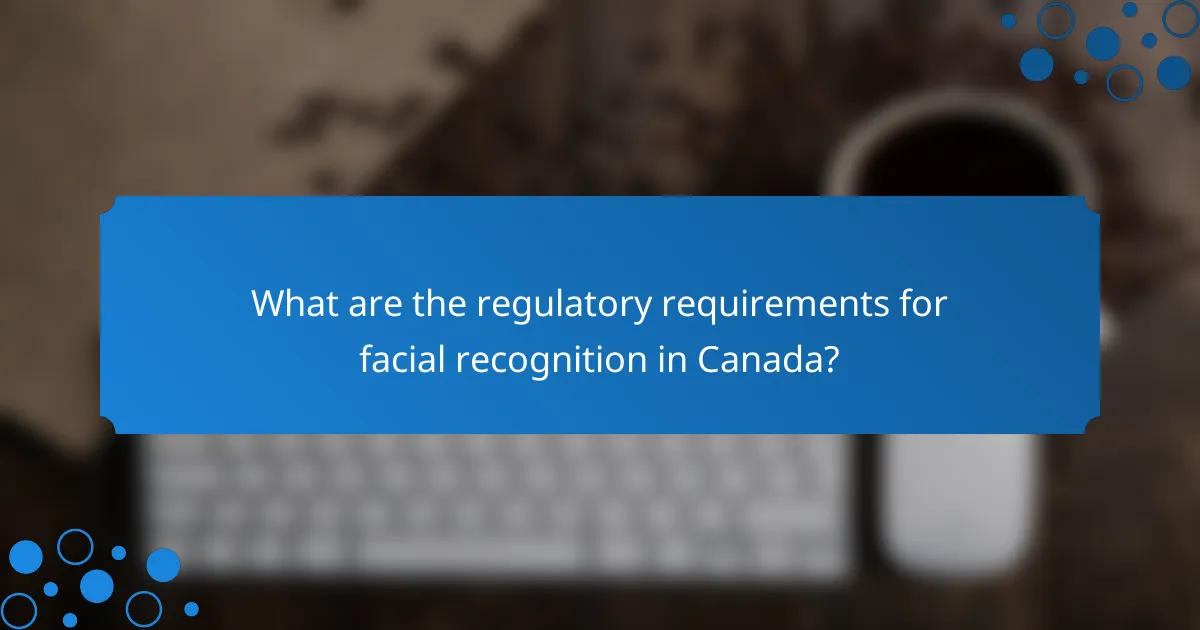
What are the regulatory requirements for facial recognition in Canada?
In Canada, facial recognition systems must comply with various regulatory requirements that focus on privacy protection and data security. Key regulations include the Personal Information Protection and Electronic Documents Act (PIPEDA) and provincial privacy laws, which govern how personal data is collected, used, and disclosed.
Compliance with PIPEDA
PIPEDA mandates that organizations using facial recognition technology must obtain consent from individuals before collecting their biometric data. This consent must be informed, meaning individuals should understand how their data will be used and the potential risks involved.
Organizations must also implement adequate security measures to protect the collected data from unauthorized access and breaches. Regular audits and assessments of data handling practices are essential to ensure ongoing compliance with PIPEDA standards.
Adhering to provincial privacy laws
In addition to PIPEDA, several provinces in Canada have their own privacy laws that may impose stricter requirements on facial recognition systems. For instance, British Columbia and Alberta have specific regulations that govern the use of personal information, including biometric data.
Organizations must familiarize themselves with these provincial laws to ensure compliance. This may involve conducting impact assessments and ensuring that data collection practices align with local privacy standards. Failure to adhere to these regulations can result in significant penalties and damage to reputation.
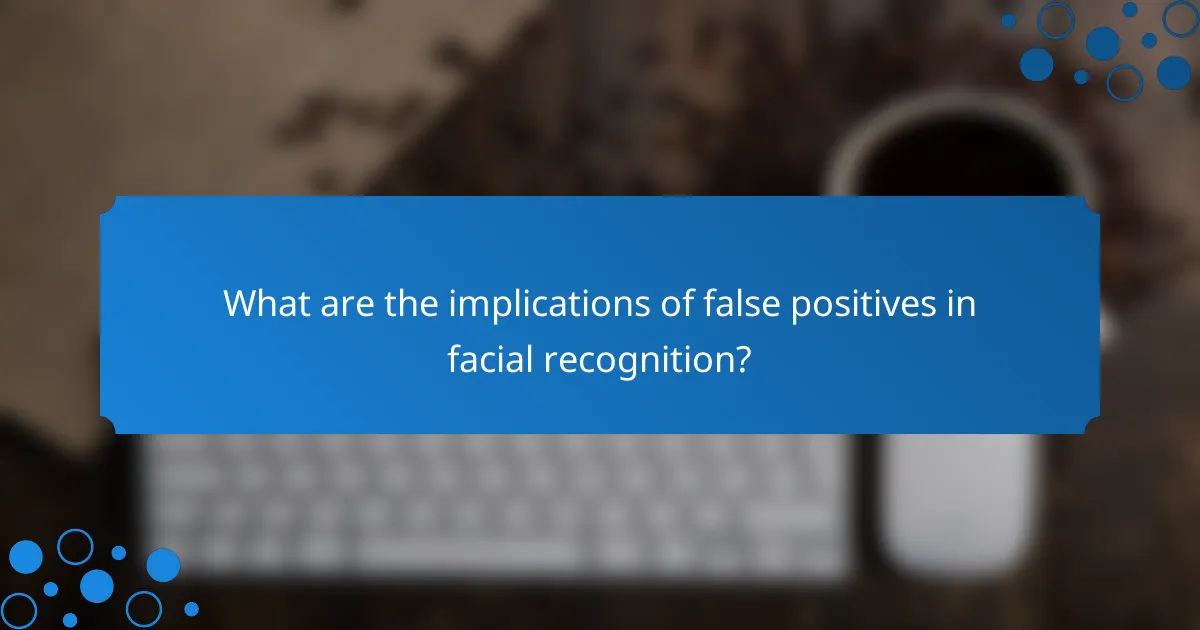
What are the implications of false positives in facial recognition?
False positives in facial recognition can lead to significant issues, including wrongful accusations and misidentifications. These errors undermine the reliability of the technology and can have serious consequences for individuals and society as a whole.
Impact on public trust
The occurrence of false positives can severely damage public trust in facial recognition systems. When individuals are mistakenly identified as criminals or suspects, it creates fear and skepticism about the technology’s accuracy and fairness. This erosion of trust can lead to resistance against the implementation of facial recognition in public spaces.
For example, if a facial recognition system incorrectly identifies a person during a security check, it may lead to public outcry and calls for stricter regulations. Over time, repeated incidents can foster a general distrust of law enforcement and technology companies that deploy these systems.
Legal consequences for misuse
Misuse of facial recognition technology, particularly when it results in false positives, can lead to serious legal ramifications. Individuals wrongfully identified may pursue legal action against law enforcement agencies or companies, claiming damages for emotional distress or reputational harm.
In some jurisdictions, regulations may require law enforcement to adhere to strict guidelines when using facial recognition technology. Failure to comply with these regulations can result in penalties, including fines or restrictions on future use. Organizations must ensure they have robust protocols in place to minimize errors and protect against legal challenges.
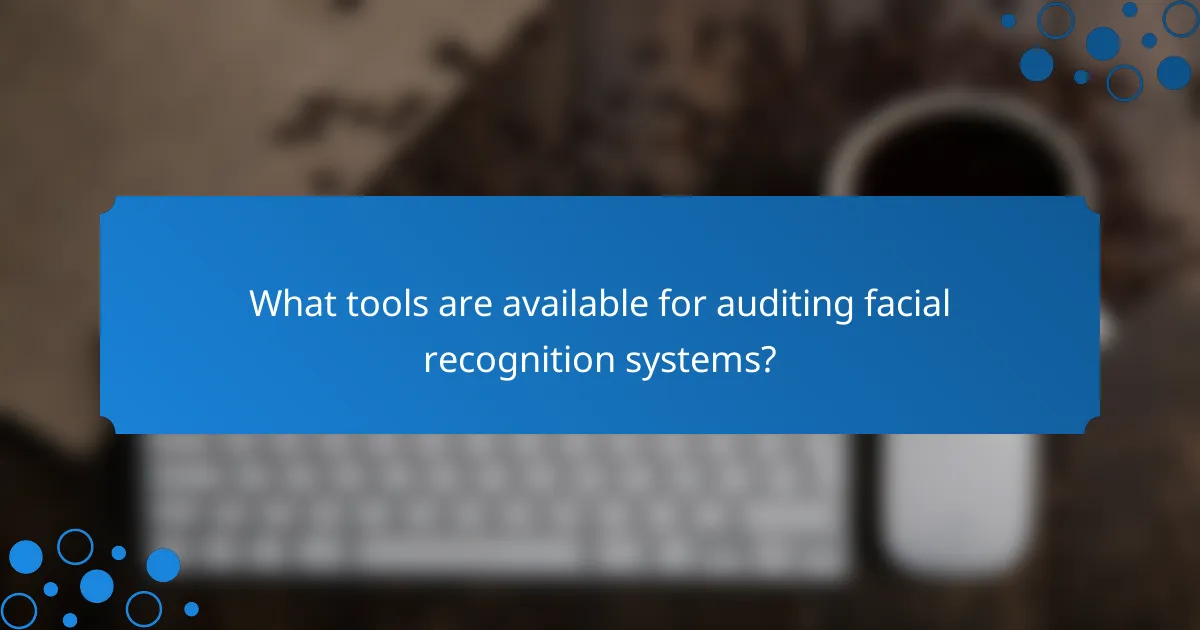
What tools are available for auditing facial recognition systems?
Several tools exist for auditing facial recognition systems, focusing on performance evaluation, bias detection, and regulatory compliance. These tools help organizations assess the accuracy and fairness of their facial recognition technologies, ensuring they meet ethical and legal standards.
IBM Watson OpenScale
IBM Watson OpenScale provides a comprehensive platform for monitoring and auditing AI models, including facial recognition systems. It offers features such as bias detection, transparency reports, and performance tracking, allowing organizations to evaluate how their models perform across different demographics.
Users can set up automated monitoring to receive alerts on model drift or bias, helping to maintain compliance with regulations. The platform supports integration with various data sources, making it adaptable for different organizational needs.
Microsoft Azure Face API
The Microsoft Azure Face API includes tools for facial recognition and auditing capabilities that help identify potential biases in model predictions. It allows users to analyze the accuracy of face detection and recognition across diverse groups, providing insights into performance disparities.
With built-in metrics and reporting features, organizations can easily assess compliance with ethical guidelines and regulatory requirements. The API also supports customization, enabling users to tailor the auditing process to their specific use cases and risk factors.
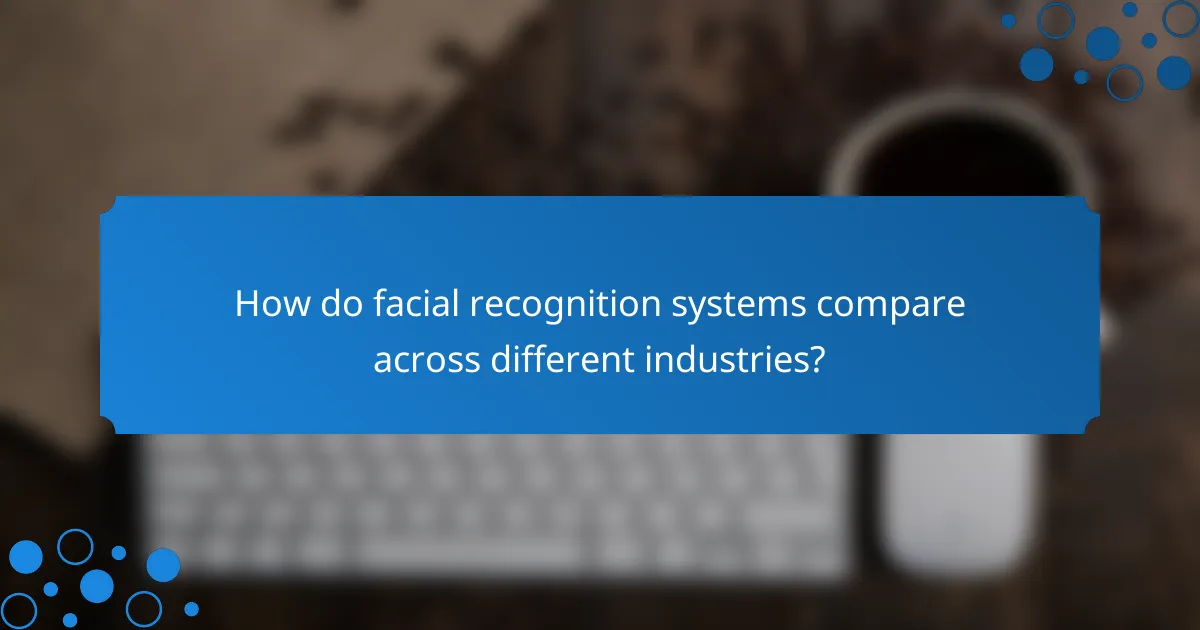
How do facial recognition systems compare across different industries?
Facial recognition systems vary significantly across industries, each with unique applications, challenges, and regulatory considerations. Understanding these differences is crucial for effective implementation and compliance.
Law enforcement vs. retail applications
In law enforcement, facial recognition systems are primarily used for identifying suspects and solving crimes. These systems often operate in real-time, scanning public spaces and databases, which raises privacy concerns and necessitates strict adherence to regulations like the GDPR in Europe.
In contrast, retail applications focus on enhancing customer experiences and security. Retailers may use facial recognition to analyze shopper demographics or prevent theft. While these systems can improve sales strategies, they must balance customer privacy with data collection practices.
Healthcare vs. security sectors
In healthcare, facial recognition systems can streamline patient identification and enhance security in sensitive areas. They help ensure that the right patient receives the correct treatment, but compliance with health regulations, such as HIPAA in the U.S., is critical to protect patient information.
Conversely, in the security sector, facial recognition is employed for access control and surveillance. These systems must be reliable to minimize false positives, which can lead to unauthorized access or wrongful accusations. Implementing robust training data and regular audits can help mitigate these risks.
